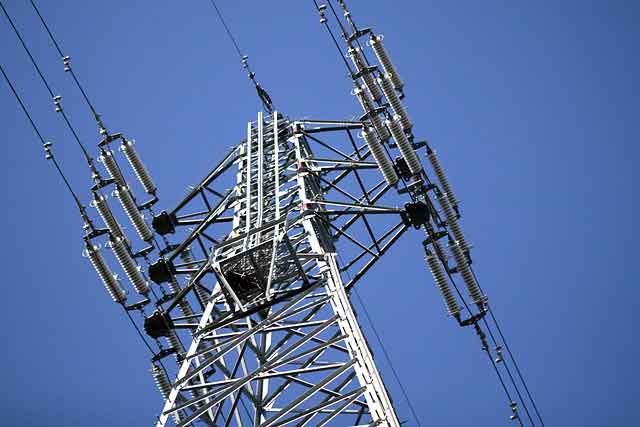Overruns hit power overhaul
By Knight Ridder Tribune
NFPA 70e Training - Arc Flash
Our customized live online or in‑person group training can be delivered to your staff at your location.

- Live Online
- 6 hours Instructor-led
- Group Training Available
At issue is the switch to a "nodal" market, which state regulators authorized in 2003. Under the ambitious overhaul, operators of the Texas power grid are installing hundreds of millions of dollars worth of new computers and software and creating new technical systems to manage the state's wholesale electricity market.
When completed, the system will spit out rapid-fire price calculations in the wholesale market. It will also collect extensive data associated with thousands of so-called nodes, which are points on the transmission system where power is either added or removed by wholesalers and users.
Implementation is scheduled for the end of the year. Although the cost of the project is not passed directly to consumers, that doesn't mean that expenditures - and overruns - won't ultimately be reflected on power bills. That would come as bad news for North Texas, where electricity prices have gone up by about 70 percent since 2000.
Geoffrey Gay, a lawyer with expertise in utility matters who has been monitoring the project, says technical problems abound. He noted that initial estimates put the cost of implementation at $76.3 million, but that figure has now grown to nearly $300 million - or about $15 over time for every customer served by the Texas power grid.
He said he wouldn't be surprised if the price tag eventually soars to $500 million. "We think the nodal process is misguided," said Gay, who represents North Texas municipalities.
But Terry Hadley, a spokesman for the Texas Public Utility Commission, said that even considering the cost, the new system should result in overall savings and efficiency on the power grid. He said that regulators will look closely at the growing cost.
The new system will increase how much money some power-grid operators make while potentially reducing payments to other operators. The system will accomplish this by giving operators the ability to reallocate some extra costs associated with relieving congestion on overburdened power lines.
Under the current system, those costs are spread uniformly to wholesale electricity buyers across the grid. Under the nodal system, those costs will be allocated to operators in areas of the grid where congestion is greatest. That means that the cost of power generated in areas with overburdened power lines would be greater than in areas with less burden.
The system will also give power-grid operators the ability to better forecast how power flows across the state, and provide additional data so engineers and regulators can guard against market manipulation by power wholesalers. Supporters say the nodal system will create additional price incentives that will lead to a more efficient wholesale electricity market.
That is, the increased power prices in congested areas will give companies greater incentives to build plants where they are most needed. But skeptics warn that even with the lure of higher power prices, power companies will have difficulty building in urban areas because of stringent federal clean-air guidelines and the difficulty in obtaining right of way.
Ron Hinsley, spokesman for the Electric Reliability Council of Texas, which operates the power grid, said the organization is pursuing more than a dozen major changes associated with the nodal system. The switchover is not simple, and in many ways it will be as daunting technically as the move to retail electric deregulation in 2002.
Among the changes: Engineers are creating a system to model electricity demand across the grid. This will require new computer hardware, servers and software. ERCOT will have a new system to manage transactions. Hinsley compared the new system to those that manage automated transactions on eBay or on the Nasdaq stock exchange.
Engineers are trying to improve ERCOT's energy-management system to better guard against outages and other problems. An updated "electronic data warehouse" will provide aggregated technical information so technicians can project usage across the power grid. The data warehouse will also provide detailed information to ERCOT's market monitor, who is charged with guarding against market abuses.
A report released in February 2006 by the American Public Power Association concluded that some of the benefits of nodal markets have been oversold by proponents. It states that although a nodal wholesale market may be the "best approach available" in theory, it has not worked particularly well in practice: Consumers living in the Northeast have not realized any cost savings from a nodal system there.
Implementing a nodal system does not guarantee competitive markets or prevent the abuse of markets by companies that control large segments of the wholesale market. The new market design does not provide incentives for investment in some areas with the most overburdened power lines.
That's because there are other, more compelling, reasons to choose a site - such as the existence of local infrastructure, zoning issues and a lack of local opposition.
"Simply implementing (a nodal system) does not guarantee competitive markets, nor does it prevent the abuse of market power," the report said. "In terms of investment signals... there is simply no evidence that the price signaling associated with (a nodal system) has been an effective spur to investment in generation [or] transmission."
"The commissioners have determined that customers will benefit from lower electric costs in the entire ERCOT system that far outweighs the implementation costs from going to a nodal system.... (The increased implementation cost) is a concern that the commission wants to review," Terry Hadley, spokesman for the Texas Public Utility Commission.
"There are a lot of internal problems - it's a consultants' boondoggle, people there get experience and then get hired away, it's so confused, the systems don't work as they were intended."











